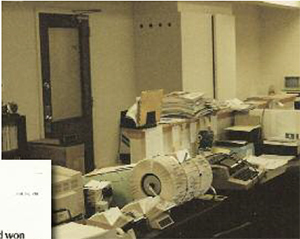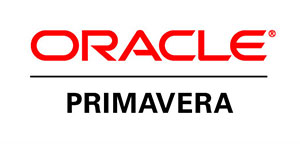How does Primavera Born?

Figure 1: Primavera Office Philadelphia
In 1983, engineers Joel Koppelman and Dick Faris shared a vision: There was enormous potential for software that would bring project management to the desktop. The IBM PC was just taking hold of the corporate Marketplace and the duo realized – dreamed perhaps – that they could develop and sell affordable software to make Project planning and control easier for their follow engineers.
They opened their new company, called Primavera, on May 1. Joel Koppelman and Dick Faris founded Primavera Systems in Philadelphia. After that they delivered their first product, Project Planner (P3), in October of the same year. Their vision and determination revolutionized the way that projects are managed, and their mission to rid the world of project failure continues to drive the company they founded. The first, not quite “paperless” Primavera office (see Figure 1), located just a few blocks away from Bala Cynwyd, Pa., opened in May 1983.
Primavera Project Planner (P3)

Figure 2: Primavera on Newspaper
"Primavera Systems gambled on success - and won"
In 1984, the company posted $1.5 million in revenues, and in 1985, Joel Koppelman and Dick Faris were featured in the Philadelphia Business Journal.
Primavera Project Planner (P3) was the software product that launched a company and started a revolution. Their vision was that these same principles of project management could be implemented on desktop PCs, which were then just making their way into common use. The first product went on sale in 1983, available on a set of 5¼-inch floppy disks that held a whopping 360 KB of data each. The application required 256 KB of RAM to run, which was quite a lot at the time.
Company Names Primavera Systems

Figure 3: Primavera Founder - Dick Farris
Dick Faris (see Figure 3) had been a visible participant in promoting good project management practices from the day he cofounded the company. That days, his speaking engagements take him around the world.
Primavera Project Planner (P3)

Figure 4: Primavera Planner (P3)
Primavera Project Planner (P3) was the software product that launched a company and started a revolution.
Their vision was that these same principles of project management could be implemented on desktop PCs, which were then just making their way into common use. The first product went on sale in 1983, available on a set of 5¼-inch floppy disks that held a whopping 360 KB of data each. The application required 256 KB of RAM to run, which was quite a lot at the time.
Company Named Primavera Systems

Figure 5: Primavera Founder - Joel Koppelman
“We knew from the start that our company would be global. When we sat down to name the company, we very purposefully chose a name that would be understood and accepted internationally.”
In March 1988, Primavera held a user meeting in Taipei, Taiwan, Joel Koppelman, CEO
Whether exploring emerging technologies or envisioning a changing marketplace, Primavera cofounders Dick Faris and Joel Koppelman (see Figure 5), were ready for the future.
Primavera P3e and TeamPlay
In the late 1990s, with the rise of networks and the Internet, it became clear that the future of project scheduling software lay beyond a single product installed on one person's desktop. Instead, project scheduling was moving towards systems that could be accessed simultaneously by multiple people in different locations. By the end of the decade, the company, once again ahead of an evolving marketplace, introduced P3e and TeamPlay. These new products embraced the Internet and offered enterprise-wide solutions – providing 24/7 communication and transforming the way that projects are executed around the world. During the ’90s, Primavera grew to a company with more than 300 employees, had authorized dealers in 50 countries, opened two international offices, and regularly released new versions of its products
Primavera Revolution on the Project Management
To look at Primavera in the 2000s is to see the future. Its history of project excellence and commitment to customers has positioned Primavera as the company most likely to revolutionize the future of project management.
Primavera’s philosophy of growing both organically as well as through acquisition, was evident in the early 2000s, beginning in 2003, with the acquisition of the resource management software company Evolve
In 2006, Primavera’s growing success attracted the attention of equity investors Francisco Partners and Insight Venture Partners. The new partnership enabled Primavera to acquire ProSight, a portfolio analysis software company, and Pertmaster, a risk analysis and mitigation software company. The acquisitions also brought new offices in Crystal City, Va.; Portland, Ore.; Houston; and Jerusalem.
Primavera P6
During the years 2000 to 2007, Primavera’s revenues tripled. In 2007, the company capped 24 years of consistent growth with revenues of $176 million, a 43 percent increase over 2006. And, says CEO Joel Koppelman, Primavera is poised to become a $500 million company over the next three to five years.
Over the years, the products have appeared to merge and diverge, adding capabilities such as timesheet entry, integration, and portfolio analysis, eventually evolving into what is now called P6. In 2004, Primavera 5.0 was released, and in 2007, P6.0 was released, followed by P6.2 in 2008
Oracle Buys Primavera
In 2008, another major change occurred. Primavera, a privately held company, was bought by Oracle, a publicly held corporation.
In 2008, soon after P6.2 came out, it was announced that Oracle Corporation was buying Primavera. Starting as a database provider in 1979, Oracle had grown over the years into a large and influential company, focused not only on databases, but on providing an array of software products that are fundamental to managing modern businesses. This array included enterprise resource planning (ERP) systems, content management systems, analytical and reporting systems, and application servers and technology, to describe just a few. In order to ensure that they also owned the best-of-breed in project scheduling software, Oracle acquired Primavera Systems in 2008
Oracle acquired Primavera Systems

Figure 6: Oracle Primavera Logo
Since the acquisition, P6 has undergone a number of changes. First, the various names were consolidated into one: P6. Oracle also spent considerable resources improving and adding to the product. For example, P6 now supports a standards-compliant Web Services API; it can run from a cluster of WebLogic or WebSphere application servers; and the full capabilities of the system are now available through a web browser.
Who is Akim Engineering? | Oracle Primavera Experts Team
A
KIM Engineering is a team of professionals. Every member of our team has spent many hours polishing professional skills and earning a unique experience in the ocean of Oracle Primavera, project management and planning, technical support etc. We enjoy the process of creating a project with Oracle Primavera from its start to its end - from a draft excel task list, all the way through building work breakdown structure, activities, relationships, resource and resource assignments to the approved baseline schedule, and then still on and on, providing our customers with superior support and guidance on the progress update and reporting process.








